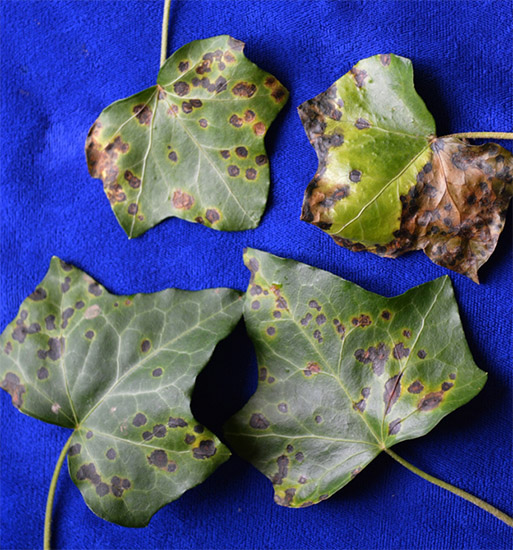Issue 9, June 21, 2013
Bacterial Leaf Spot of English Ivy
English Ivy (Hedera helix) is a ground cover/clinging vine with attractive, dark green, and glossy leaves. In the landscape, it is commonly used in shaded areas, where grass and other plants may be difficult to become established. Several leaf spots are known to infect English Ivy, but one of the more common is Bacterial Leaf Spot caused by Xanthomonas campestris pv. Hederae.

Photo 1. Bacterial Leaf Spot of Hedera helix.
This disease can be found anywhere plants are grown outdoors. Leaves closest to the ground or near wet areas are more severely affected. The leaves in the picture above were collected from vines trailing on the ground. Nearby vines that were climbing were unaffected by the disease.
Bacterial Leaf Spot infections are favored by frequent rainfall and/or overhead irrigation. Splashing water and/or working with wet plants promote the spread the pathogen. The bacteria enters the plant through natural openings (e.g. stomates) or through wounds.
Control Options
- When purchasing English ivy, select disease free plants.
- Remove affected plant material as soon as you observe symptoms. Dispose of diseased plant tissue by burning or removing from the site.
- Keep plant tissue as dry as possible. Water early in the day, so that plants have a chance to dry before the evening. Periodically thin vines to reduce dense growth and to promote drying.
- Several pesticides are labeled to prevent bacterial leaf spot. Consult the Commercial Landscape & Turfgrass Pest Management Handbook or Pest Management for the Home Landscape for lists of recommended products.
Author:
Travis Cleveland